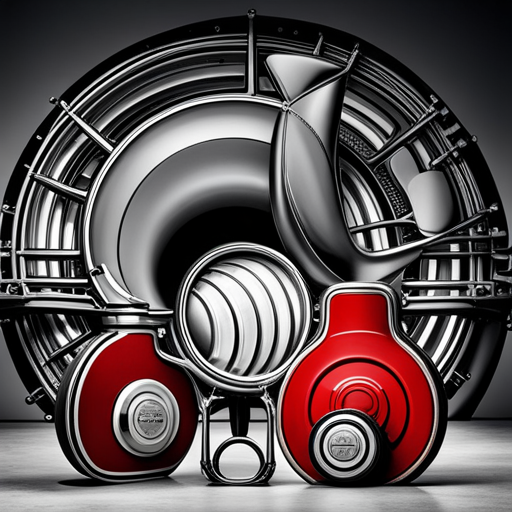The Evolution of Hubcaps: A Journey through Automotive History
Feb 06, 2024

Hubcaps, those small yet essential accessories that adorn our wheels, have become a symbol of automotive style and functionality. Since their introduction, they have undergone a fascinating evolution, mirroring the advancement of technology and design in the automotive industry. Join us on a journey through automotive history as we explore the evolution of hubcaps.
Rewind to the early days of the automobile industry, and you'll find that hubcaps were originally conceived as functional accessories. Back then, vehicles had wooden or steel-spoked wheels, which needed protection against dust, dirt, and debris. The earliest hubcaps were simple metal discs that covered the axle, protecting it from corrosion and maintaining the smooth rotation of the wheels.
As the automotive industry developed, so did the hubcaps. In the 1930s, manufacturers began incorporating decorative elements into their designs, transforming hubcaps into stylish accessories. Companies like General Motors and Chrysler introduced ornate hubcaps, featuring intricate patterns and designs that were often specific to each brand. These hubcaps showcased the creative spirit of the era, reflecting the art deco influences prevalent in architecture and design during that time.
In the 1950s, hubcaps reached their golden age. With the rise of the automobile as a symbol of personal freedom and luxury, the demand for eye-catching hubcaps skyrocketed. Inspired by the optimism of the post-war period, manufacturers began experimenting with innovative materials and shapes. Chrome-plated hubcaps became the rage, reflecting the growing popularity of shiny, polished surfaces.
The 1960s witnessed another wave of evolution in hubcap design. As automotive manufacturers embraced aerodynamics, hubcaps became more streamlined and minimalistic. The focus shifted from intricate patterns to sleek, futuristic shapes that complemented the overall design aesthetics of the vehicles. Additionally, the introduction of wire wheels gained popularity, offering a unique alternative to traditional hubcaps.
As we fast forward to the present day, hubcaps have continued to evolve alongside changing automotive trends. Modern hubcaps now feature a wide range of materials, including aluminum, plastic, and even carbon fiber, catering to various preferences and budgets. They come in different sizes, styles, and finishes, allowing car owners to customize their vehicles according to their personal taste.
While hubcaps have evolved, they have not lost their original purpose – to protect the wheel from dust, moisture, and corrosion. Today's hubcaps are designed to fit snugly over the wheel, offering an added layer of protection and enhancing the overall appearance of the vehicle.
At our premier hubcap supplier since 1979, we understand the importance of staying attuned to the ever-evolving world of hubcaps. We pride ourselves on providing our customers with a wide selection of hubcaps, wheel covers, hub caps, chrome wheel skins, and wheel simulators. Whether you're looking to restore a classic car or add a touch of style to a brand-new vehicle, we have the perfect hubcaps to suit your needs.
In conclusion, the evolution of hubcaps is a testament to the progress of the automotive industry. From their humble beginnings as functional accessories to their transformation into stylish designer elements, hubcaps have come a long way. At our premier hubcap supplier, we recognize the significance of these small yet impactful accessories. We invite you to browse our extensive range of hubcaps and experience the journey through automotive history for yourself!









































